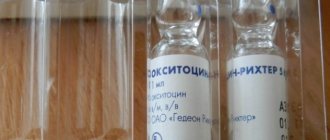How long does it take for thrush to go away? No gynecologist can answer this question without diagnosing the disease. For initial symptoms, up to 5-10 days of treatment will be required. In advanced or chronic conditions, you will have to be patient and go through a longer process of treatment and recovery. The disease will manifest itself every time the natural microflora of the vagina is disrupted.
How to understand that it is thrush
Thrush, or candidiasis, is an inflammatory process of the female genital organs, the causative agent of which is the Candida fungus, located in the microflora of the large intestine and vagina. The following symptoms are observed with the disease:
- with thrush, abundant cheesy discharge appears from the genitals;
- there is itching in the perineum, burning in the urethra;
- in a more advanced stage, pain appears during sexual intercourse.
The development of candidiasis occurs in the mucous membrane of the superficial layers of the vagina. The natural microflora of the vagina contains lactobacilli, which inhibit the growth of Candida fungus. But when the microflora is disturbed, a favorable environment is created for the spread of fungus.
Why does thrush appear?
The goal of any therapy is to eliminate the cause of the disease. In the case of thrush, the main measures should be aimed at suppressing opportunistic fungal microflora and restoring the natural pH of the vagina.
In order to quickly cope with vaginal candidiasis, it is necessary to take into account and neutralize the following factors that provoke the progression of the disease:
- Weakening of the body's protective functions.
- Presence of chronic diseases.
- Unbalanced diet and consumption of harmful foods.
- Presence of bad habits: alcoholism and smoking.
- Unprotected sexual intercourse.
- Lack of proper hygiene rules.
- Wearing tight clothing and synthetic underwear.
- Long-term antibacterial therapy.
You can correct such reasons yourself. But only a doctor can accurately determine the stage of the disease and the type of pathogen. Without such data, it is impossible to prescribe effective drug therapy.
Causes
Due to factors such as diabetes mellitus, urogenital infections, which can cause a decrease in immunity, as well as premenstrual syndrome, hormonal changes, pregnancy, stress, a woman becomes predisposed to the appearance of thrush.
In a healthy woman's body, there are 30 varieties of Candida fungi on the walls of the vaginal mucosa, and this is the norm. Under the influence of unfavorable factors, the natural microflora of the vagina changes, and harmful Candida fungi quickly develop.
The early form of the disease is curable in a few days, but often women do not treat the first manifestations of thrush, which causes complications.
Prevention measures
After completing a course of drug therapy, it is recommended to undergo a control test for candidiasis. This approach eliminates the possibility of re-progression of the fungal disease.
In order to eliminate the possibility of recurrence of thrush, it is recommended to observe the following preventive measures:
- Do not include large amounts of sugar and spicy foods in your diet.
- Eat fermented milk products daily: natural yogurt, kefir, yogurt.
- Wash with antibacterial agents that have a neutral pH level.
- When using daily sanitary pads, do not wear them for more than 3-4 hours.
- Wear only cotton underwear and avoid wearing tight clothing.
You can find out how many days it will take for improvement to occur after drug therapy only from your attending physician. Thrush should be treated comprehensively, using medications prescribed by the doctor. If drug therapy lasts a long time and the result does not occur, then the specialist, as a rule, changes the medication to a more effective one.
Incubation period
All infectious diseases have an incubation period. The incubation period of thrush is the stage from the onset of infection to subsequent reproduction. Once on the mucous membrane of the urethra, vulva and vagina, the fungus penetrates 6 mm without penetrating into the thickness of the tissue.
How long does it take for thrush to appear? The incubation period for fungal infections of the genitals can vary from several days to 2 months.
How long is the incubation period? From the moment of infection, after a week, and sometimes 2 months, the woman begins to feel discomfort in the genital area, that is, the first symptoms of thrush.
The incubation period of thrush is divided into 4 stages:
- The first stage is the attachment of the fungus to the walls of the genital organs.
- The second stage is the spread of Candida fungus in the mucous membranes of the genital organs. With strong immunity, the spread of the fungus is controlled. After the body’s protective functions weaken, the fungus begins to grow.
- The third stage is the penetration of the Candida fungus deep into the mucous membranes.
- The fourth stage is when microorganisms enter the circulatory system through the bloodstream, affecting other internal organs.
How long does thrush last on average and what does it depend on?
When answering the question of how many days does thrush go away, it is impossible to give a definite answer, since it depends on a number of factors:
- The state of the body's immune system. Reduced reactivity is not only the leading factor in the occurrence of candidiasis, but also determines the duration of its course.
- The duration of the period from the moment of illness to the start of therapy. If treatment is prescribed 24-48 hours after the appearance of the first complaints and signs, then the likelihood of a speedy recovery is much higher than with late-started therapy.
- The state of the vaginal microflora. If the development of candidiasis occurs against the background of vaginal dysbiosis, then treatment only with antifungal drugs without the use of lactobacilli will aggravate the course of thrush and complicate recovery.
- Background chronic pathology. Quite often, genital candidiasis occurs in women suffering from diabetes, chronic inflammatory diseases of the reproductive system, toxic goiter or immunodeficiency. Therefore, the duration of thrush also depends on the degree of compensation of the concomitant disease.
- Adequacy of the selected therapy. It is important not just to use an antifungal drug, you need to choose exactly the one to which the seeded fungi are sensitive.
- Compliance with recommendations and appointments. In order to shorten the duration of the disease, a woman should follow all the advice of her doctor.
If we do not take into account the above factors, the average duration of the acute form of thrush is 7-10 days, while chronic candidiasis can affect the physical condition of a woman for much longer.
Duration of treatment
How long does it take to treat thrush? The timing of recovery directly depends on the severity of the disease:
- Mild form of thrush: 5-7 days are enough for complete recovery;
- Advanced form of the disease: long-term treatment will be required - up to 10-14 days;
- Chronic thrush: treatment may take several months.
The cause of thrush may be a disorder of the immune system, which has a detrimental effect on the vaginal microflora.
Due to improper treatment, the infection spreads beyond the genitals, causing inflammation of the mucous membranes of the urethra, bladder and cervix. Even if the unpleasant sensations have ceased to bother you, it is absolutely impossible to interrupt the treatment prescribed by the doctor, because this threatens the development of drug resistance and the disease becoming chronic.
How long does it take to treat thrush? The duration of treatment depends on the condition of the woman’s body.
Types of disease
Depending on the area of fungal infection, female candidiasis is divided into the following groups:
- surface. Smooth mucous membranes are affected. Erythematous punctate lesions with vesicles, pustules and erosions are formed;
- interdigital. Swelling and redness occur in the interdigital space. This type of candidiasis often occurs in schoolchildren, as well as people whose professional activities involve gardening;
- candidiasis of the mucous membranes. A white coating forms with an easily removable film;
- oral candidiasis. The mucous membrane of the gums, cheeks, tongue swells, hyperemic lesions appear;
- intestinal candidiasis. Most often occurs after the use of antibacterial agents. Diarrhea, flatulence, and pain in the abdominal area occur;
- vaginal candidiasis.
How is thrush treated in women?
When the first signs of thrush appear (itching in the perineum, burning in the urethra, painful sexual intercourse), you must visit a gynecologist who will study the history of the disease, the patient’s complaints, and conduct an initial examination of the genital organs.
After assessing the condition of the mucous membranes of the urethra and vagina, a smear and bacteriological culture are taken. Based on the results of these tests, the type of fungus and its sensitivity to antifungal drugs are determined, after which treatment is prescribed (not only antifungal, but also immunity-boosting).
There are also some infectious diseases that often go along with thrush. These are chlamydia, genital herpes, gonorrhea. In this case, antibiotics are added to the treatment, taking into account the identified pathogens.
Treatment methods for thrush:
- local method - suppositories, vaginal tablets, anti-inflammatory solutions;
- systemic method - tablets taken orally.
After completion of treatment, you should again make an appointment with a gynecologist and undergo a re-examination, taking smears and the necessary tests.
How to prevent relapse of the disease?
If a person has digestive system organs affected by this disease and other concomitant diseases, there is a high probability of relapse of candidiasis. In this case, during treatment, listen carefully to your doctor, do not make unauthorized adjustments in the course of treatment, and also use immunomodulators to increase immunity. Otherwise, the healing process will take longer; sometimes people live with thrush for several years until they begin to effectively fight it.
There are frequent cases of childhood candidiasis, which is directly related to the fact that the mother carries this type of fungus during breastfeeding. The symptoms are the same as in an adult. In this case, candidiasis must be treated in mother and child at the same time, and the mother is recommended to follow all existing hygiene rules for caring for the child.
Candidiasis can be cured much faster by following all the doctor’s instructions. Along with treatment, it is necessary to adhere to a special diet, constantly carry out hygiene procedures, and consume vitamins and minerals. Particular attention should be paid to the treatment and prevention of other chronic diseases that may stimulate the development and growth of this fungal disease.
Treatment of sexual partner for thrush
Men are also susceptible to the disease, but the clinical manifestations are not as striking as in women. Candidiasis can cause a disease such as balanoposthitis.
- How long will it take a man to recover from thrush? Thrush occurs in the form of inflammation of the glans penis and foreskin, resulting in redness, itching and burning. Primary symptoms can be quickly removed in 1-2 days, but this does not mean that the man is completely cured. The problem has not disappeared and the course should be at least 5 days. To make a diagnosis, it is necessary to take smears and undergo a bacteriological examination.
- After what time can sexual partners have sex? You can have sexual intercourse only after both partners have fully recovered.
Thrush is not an STI. Treatment of the sexual partner is not required. A man is prescribed therapy only if there are obvious symptoms of the disease.
Duration of tablet therapy
How long does treatment last for chronic thrush? Recurrent candidiasis is treated with vaginal suppositories and oral tablets. The advantage of this therapy is the shorter duration of the course, but there is a risk of developing allergic reactions, side effects from the digestive tract, and liver.
List of antimycotics for the treatment of thrush:
- Miconazole is taken 1 tablet per day for 3 days.
- Diflucan is taken once in a dosage of 150 mg.
- Ketocanozole should be taken 1-2 times a day for 5 days in a row.
- Levorin is taken for 5 days for acute forms of thrush, and for 10 days for chronic cases.
A doctor should prescribe pills after confirming the diagnosis; self-medication can cause the development of side effects and complications. Most drugs are contraindicated for therapy during pregnancy. In how many days candidiasis will go away, the gynecologist will be able to tell, taking into account the individual characteristics of the woman and the severity of the disease.
How to treat candidiasis?
Patients who are concerned about how long it takes for thrush to go away should contact their attending physician who knows the clinical picture of the disease and has information about the individual characteristics of the patient and possible complications during treatment. The standard treatment regimen for acute candidiasis is as follows:
- The use of broad-spectrum drugs to destroy fungal and bacterial flora. For this purpose, systemic or local agents can be used. In most cases, vaginal tablets and suppositories “Pimafucin” and “Terzhinan” become the drugs of choice. Flucostat capsules have a good therapeutic effect. In the absence of allergies and contraindications for use, the doctor may prescribe the broad-spectrum drug Fluconazole.
- Restoration of vaginal microflora . To normalize the acidic environment and vaginal flora, topical agents are used in the form of vaginal suppositories or creams (“Acilact”, “Bifidumbacterin”).
- Normalization of intestinal microflora (“Normobact”, “Yogulakt”, “Bifidumbacterin” powder and capsules).
- Eliminating the deficiency of nutrients and strengthening the immune system with the help of vitamin and mineral complexes (“Pikovit”, “Alphabet”, “Vitrum”).
In severe cases, as well as with frequently recurrent candidiasis, the doctor may recommend a course of immunomodulatory therapy with interferon drugs or agents with the addition of antioxidants. A good therapeutic effect is achieved by using Polyoxidonium, a licensed Russian drug with a pronounced immunomodulatory effect and high detoxification properties. The product is part of the Grippol vaccine, used to prevent various forms of influenza.
More interesting: Why does thrush come back?
It is difficult to say how many days it takes for a candidiasis infection to go away with this treatment, but usually the duration of therapy, provided all recommendations are followed, does not exceed 10 days. To increase the effectiveness of therapy and eliminate the possibility of infection of a partner, it is necessary to maintain sexual rest until the end of therapy and for another two weeks after recovery.
Is it possible to treat thrush without visiting a doctor?
If you have symptoms of a general infection or childhood stomatitis, you should definitely visit a doctor.
Women who are already familiar with thrush, who are aware of what could have caused the exacerbation, and who already have a working prescription, can begin treatment before visiting the doctor. The results of the candidiasis test appear no earlier than a week later, and the wait can be unbearable.
But if the signs of the disease make you doubt the diagnosis (the discharge smells bad, you feel pain in the lower abdomen, unusual symptoms appear), then it is better to go and get a smear. Maybe Candida isn't the only germ that's causing inflammation.
If you have never had thrush and you diagnosed yourself on the Internet, then immediately forget about it and go to see a doctor.
Be sure to consult about treatment if:
- You are pregnant or breastfeeding.
- Thrush has started twice in the last six months.
- You or your partner have been diagnosed with a sexually transmitted disease in the past.
- Symptoms do not go away 7–10 days after starting treatment.
In all these cases, the doctor must clarify the diagnosis and select the best treatment.
Thrush can be cured with proper nutrition
If a woman regularly experiences thrush, it may be systemic candidiasis. In this case, fungi of the genus Candida actively multiply not only in the intimate area, but also in the small intestine, disrupting its microflora, and (or) in the oral cavity. This is the so-called systemic candidiasis, which takes a long time to treat (from two months). Its therapy includes several stages: taking antifungal drugs, as well as drugs that destroy the protective film of pathogenic microorganisms, replanting beneficial fungi that displace pathogenic ones. The final phase is the intake of prebiotics, which accelerate the reproduction of friendly microflora.
To treat any type of thrush, it is very important to adjust your diet. The favorite food of Candida fungi is simple sugars. Therefore, to limit their growth, refined sugar and products made from premium flour should be excluded from the menu for the period of treatment, dairy products (they contain sugar - lactose), as well as sweet fruits should be limited. I also recommend that my patients limit the consumption of cereals and any grains, even whole grains, during the period of treatment for thrush. During digestion, they are also broken down into simple sugars. Therefore, you can allow yourself no more than 150 g of the same porridge per day.
Yeasts, which are found in some products, for example, blue cheeses and yogurt (fungi are used for ripening), can also provoke the growth of pathogenic microflora. All of the above should be abandoned for the period of treatment.
When, based on the test results, it becomes clear that beneficial fungi have completely replaced pathogenic ones, you can add prebiotics to the treatment of thrush, as well as include foods that contain them in your diet. You shouldn’t do this ahead of time! After all, in this way we will also feed Candida, and it is important for us to “put them on a diet.” Of the products containing prebiotics, we can recommend those that contain a lot of pectin (for example, apples, pears, berries), as well as coarse fiber: greens, all types of cabbage, raw root vegetables (carrots, radishes, radishes).
We thank the Medical Center and Doctor Gavrilov Center for their help in preparing the material!
Oral tablets
There are many such tablets, ranging from the cheapest ones, which you need to take for several days, to the expensive ones, which you only need to take once. These tablets include Fluconazole, Mikosist, Flucostat, Butoconazole, Diflucan and many others. When choosing antifungal tablets, you need to pay attention not only to the cost of the drug, but also to the active ingredient in its composition. It is also necessary to take into account a number of restrictions for taking tablets: they cannot be taken during pregnancy and breastfeeding, with certain diseases of the gastrointestinal tract, with kidney and liver pathologies, as well as with individual intolerance to the components that make up the drug. It is also important to remember that all tablets have a negative effect on the liver and kidneys. Cause side effects. The tablets are taken once a day, regardless of meals, the duration of treatment is regulated by a doctor. Thrush usually goes away in one to three days. But we must not forget that such tablets are good for treating acute thrush and are not at all suitable for treating chronic thrush.
How many days does it take for thrush to go away?
Thrush is an infectious disease that mainly affects women. Even an experienced doctor cannot say exactly how long it takes for thrush to go away.
This insidious disease may not manifest itself for a long time and proceed in a latent form.
The causative agent of the pathology - the Candida fungus, present in the microflora of the large intestine in all healthy people - with a decrease in immunity begins to actively multiply, causing inflammatory processes in the genital organs.
In women, thrush develops in the mucous membrane of the superficial layers of the vagina. When the microflora is disrupted, the growth of enzymes accelerates, which provide an acidic favorable environment for the spread of the Candida fungus.
The natural microflora of the vagina contains lactobacilli, which inhibit the accelerated growth of enzymes for the spread of fungus, but an increase in the activity of pathogenic microorganisms causes various inflammatory processes.
When and how does the disease manifest itself?
The main symptoms of thrush are copious curd-like discharge. As the disease develops, the number of pathogenic fungi increases many times over, which causes an inflammatory process. Candidiasis may be accompanied by severe itching of the genitals, which intensifies in the evening and after taking a hot shower. Swelling and redness of the labia often occurs.
With a small amount of the pathogen, thrush does not appear immediately; its symptoms may not be noticed for several weeks. The incubation period is sometimes longer, in which case the disease may appear 2 months after infection.
How long it takes for candidiasis to appear depends on the individual characteristics of each person. The development of the disease is influenced by lifestyle, health, personal hygiene, etc. After sexual intercourse with an infected partner, thrush usually appears on days 2-5. It is impossible to determine how long the incubation period lasts; the disease can proceed in a latent form for a long time.
After how many days candidiasis can be completely cured, doctors can determine only after examining the patient.
If the disease is at the initial stage of development, then the minimum treatment period is 5 days. Chronic thrush is treated for at least 2 weeks.
First of all, it is necessary to establish the cause that provoked the disease - this will determine how quickly thrush can be cured.
When the first symptoms appear, you should immediately consult a doctor. Correct diagnosis and timely treatment will help you quickly cope with this disease.
The stages of development of thrush directly depend on the severity of symptoms. The more the yeast fungus grows, the more severe the patient’s condition. If the disease is not advanced, then thrush can be quickly cured. If you notice symptoms of candidiasis, you should immediately consult a doctor. Only a doctor can tell how long to treat a disease.
An accurate diagnosis can only be made by a gynecologist based on test results (gynecological smear, bacterioscopy, microflora culture). It is impossible to make a diagnosis based only on the patient’s complaints; some gynecological diseases are accompanied by similar symptoms.
Duration of treatment
How long to treat thrush depends on the severity of the disease. It is wrong to think that thrush will go away on its own. If the correct treatment is selected at the initial stage, then there is no doubt about a positive result. Taking into account the peculiarities of the course of the disease, thrush can be cured within a conventionally established time frame:
- For mild forms of the disease, treatment lasts from 5 to 14 days. This time is quite enough for a complete recovery, provided that all the doctor’s recommendations are followed. Most often, the acute form of candidiasis is treated with vaginal suppositories, immunomodulators, and probiotics.
- In the chronic form of the disease, relapses can occur over several months, so treatment will take longer. You cannot ignore the doctor’s recommendations and select medications for the treatment of thrush on your own, otherwise a relapse will occur over time.
Improper therapy can cause inflammation not only of the genital organs, but also of the cervix, bladder and other organs of the urinary system. It is strictly forbidden to interrupt the treatment process, even if the symptoms have already disappeared, otherwise the disease may become chronic.
In rare cases, thrush goes away without treatment, but the disease may reappear during ovulation or during the premenstrual period. Treatment of thrush, like other infectious diseases, requires an integrated approach.
Drug treatment
How much thrush is treated depends on the stage of the disease. Treatment can only begin after visiting a doctor. Candidiasis is mainly treated:
- antifungal drugs (Miconazole, Iconazole or Clotrimazole);
- antimicrobial agents (Levorin, Nystatin);
- drugs to enhance immunity: vitamins, probiotics;
- local treatment - suppositories, vaginal tablets.
To make thrush go away faster, you should follow a special diet during therapy. It is necessary to exclude sweet, fatty and spicy foods from the diet, learn to control emotions and not panic, as stress delays recovery. If infection occurred from a partner, joint treatment is necessary.
In the acute stage, candidiasis can be cured in 1 day with a one-time dose of a properly selected drug. The most popular and effective are Flucostat and Diflucan.
As practice shows, a full course of therapy for candidiasis can take on average from 5 to 10 days. After completing the course of treatment, it is necessary to undergo control tests to ensure that the pathogen is completely eliminated. With complex treatment, it is possible to quickly relieve symptoms and cope with the disease. If the disease has become chronic, treatment will take much longer.
Source: https://stopmol.ru/molochnitsa/cherez-skolko-dnej-prohodit-molochnitsa/










